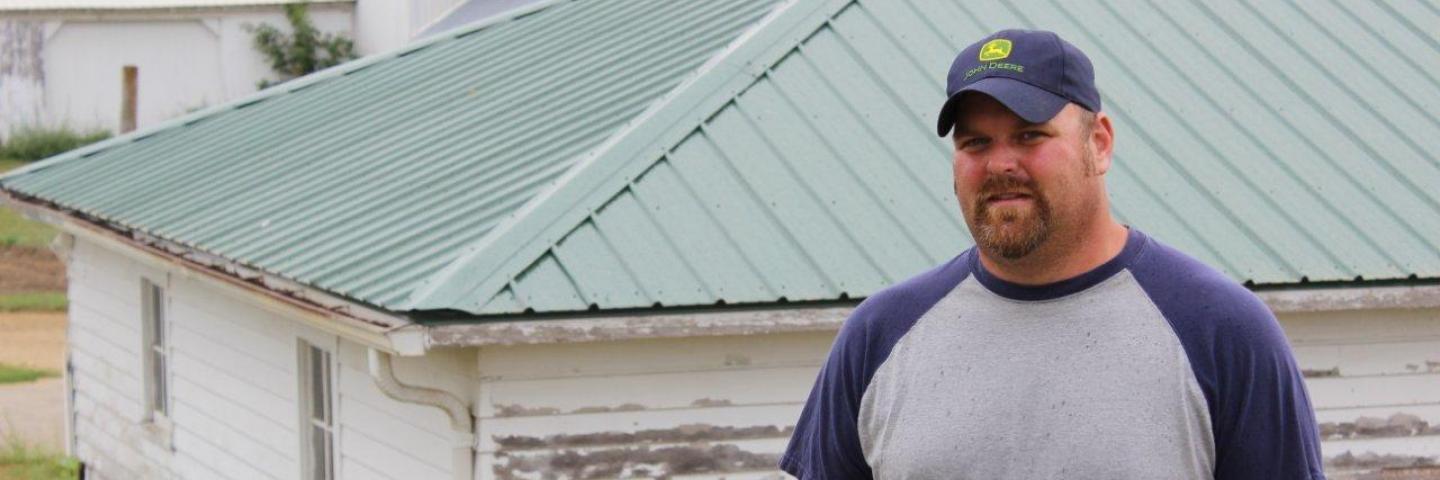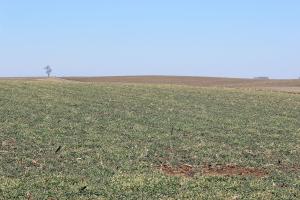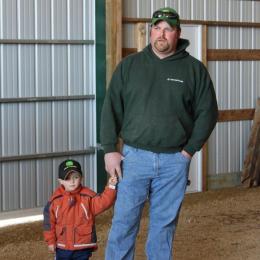
The Bremmer family has farmed land in Northwestern Illinois for 110 years. This fourth generation operation began with Ross Bremmer’s great grandfather in Stephenson County.
Cover Crops Pay
- Ross Bremmer
- Stephenson County, Illinois
- Acres: 60 acres in cover crops
- Crops: Corn and Soybeans
- Planting: Conservation Tillage
- Covers: Cereal Rye, Winter Wheat, Oats, Alfalfa, and Wheat
After attending college to earn an Associate’s degree in Agricultural Business Management, Ross rejoined the family operation. He has been a key player in their row crop, forage and livestock operation for the last 13 years.
The last two years have been a little different. Why? Ross and his brother Chad have been experimenting with cover crops on about 60 acres.
In order to learn more, Ross contacted his local Soil and Water Conservation District (SWCD) and staff at USDA’s Natural Resources Conservation Service (NRCS). They discussed which cover crop options might suit his land and specific goals. NRCS provided Ross technical support and the District offered a Partners for Conservation incentive payment, to provide financial assistance for the cover crop project.

Traditionally, Ross grew corn and chopped the residue for silage feed in early fall. His dairy heifers were eating well but this technique left the soil bare and vulnerable to erosion. Using his conservation plan as a guide, Ross decided to add cover crops into the mix—bringing living roots, new organic matter and belowground activity into the soil and rebuilding soil health and fertility naturally.
Once Ross met up with NRCS Soil Conservationist Abby Merriman, everything fell into place. They chose cereal ryegrass and winter wheat. Merriman gave Ross helpful information, job sheets, and guidance, including the Midwest Cover Crop Council's online tools. These tools help producers make key and site-specific decisions to meet landowner goals and objectives. To view the tool, visit the Midwest Cover Crop Council's website.
Cover crops require additional attention and careful management. Ross quickly learned that getting the timing right on planting cover crops can be tricky.
For 2012, he chose the middle of September as a planting date. He chopped corn early and drilled in cereal rye for optimal seed-to-soil contact. He chose cereal rye because it’s a northern grass that germinates and grows best in cooler conditions. Ross’ stand established and held up well over the winter. Ross chopped it at boot stage, giving his dairy replacement heifers top-notch forage in the spring of 2013.
As a result of his experimentation, Ross produced better quality feed and forage for his livestock. He noticed soybean yields were better on the plot where he’d grown cereal rye. In fact, soybeans grew better than corn on this ground. He also saw fewer soil erosion losses during both winter and spring. In addition, his healthier soils and vegetative cover held firm even with heavy spring rains.
Bottom line: Even after only two years, Ross had positive results. He has learned a lot and so has the family.

“Cover crops are not a new conservation practice by any means,” says Jim Ritterbusch, Stephenson County NRCS District Conservationist. “They’ve been in existence for many generations. But maybe we’re just starting to understand all the soil health benefits we can get from cover crops. And we’re seeing a renewed interest in it, which is exciting.”
Eligible producers can receive financial assistance for cover crops and other conservation solutions through NRCS' Environmental Quality Incentives Program, or EQIP.
To learn more about using cover crops on your operation or improving the health of your soil, visit the Illinois NRCS Soil Health website or stop by your local USDA Service Center.

We were looking for ways to cheapen our feed cost without sacrificing quality and reduce soil erosion.

